
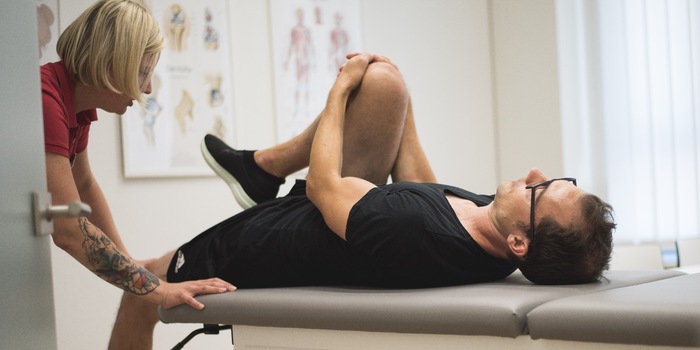
The mobility check with three small tests
I am painfully reminded that I should do more to improve my mobility and posture: Physiotherapist Melissa Stickel shows me three exercises I can do to check myself regularly. You too, of course.
A little bending, a little stretching, that's fine. I always resolve to become more flexible, but I mainly really stretch the time between two exercise sessions. What's missing is self-control and an extra dose of motivation. To improve this, Melissa shows me three little tests to check the condition of my muscle and fascia chains. Chains? Yes. Because the exercises involve movement and tension in the body across several joints, which means that many structures are involved. The concept of "chains" helps to visualise the connections in the body and to understand the musculoskeletal system as a whole - from the shoulder girdle to the torso to the legs. [[marketingpage:8709]]
1. finger-floor distance
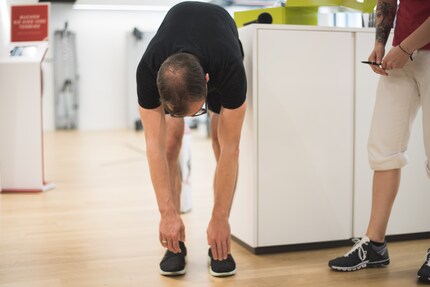
"This exercise puts tension on the entire posterior fascia chain," says Melissa. I can feel that. Muscles, tendons, fascia - everything resists fiercely when I try to get my fingers close to the floor. A youth spent on the football pitch and an everyday life in an office chair have all contributed to this. This test is a classic. But it also says a lot and is easy to perform and document.
Note to self: Calves, back of thighs, buttocks and back - all areas of the posterior chain need to be stretched and taken into account when training with the fascia roller.
2. shoulder mobility
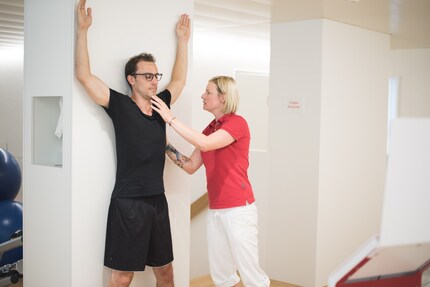
Hands up! Ouch! "The shoulder doesn't like to go outwards and upwards," says Melissa. You notice this when you straighten your spine against the wall and try to bring your arms up. It's a struggle for me. At my desk, on my bike and elsewhere, my hands are usually in front of my body. That's how many people feel, which is why a hunched back has become a common problem.
Note to self: A massage ball is recommended for the shoulder area, which can be used to locate and work on trigger points in a very targeted way. Don't forget the front, as the chest muscles are often shortened and should be stretched.
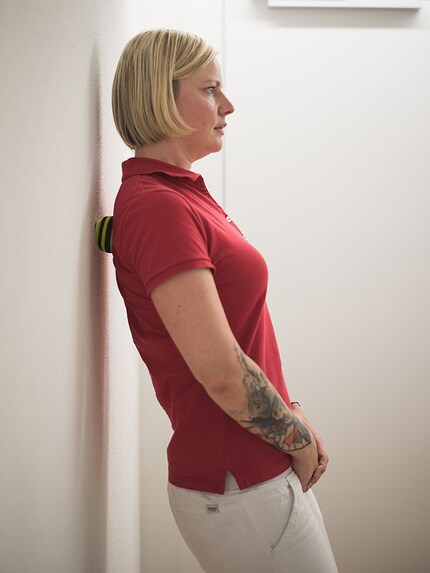
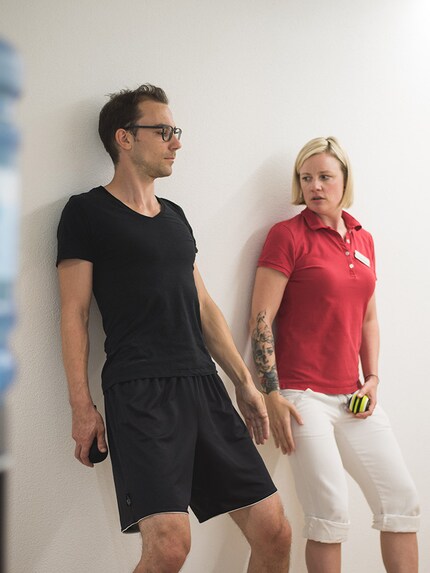

3rd hip flexor
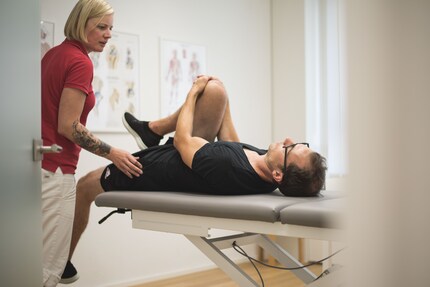
"In the anterior chain, most people's hip flexors are restricted by sitting so much," explains Melissa. Gotcha. There's a construction site for me there too.
Note to self: Don't forget the front of the thigh and especially the hip flexor. This originates in the lumbar region and the iliac crest and attaches to the upper front part of the thigh. It can be worked there while lying down, for example with a massage ball.
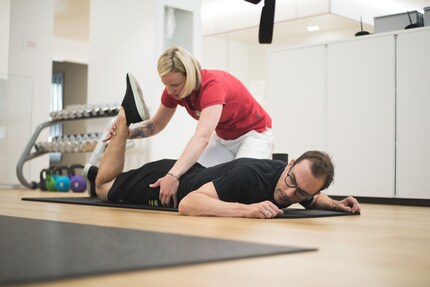
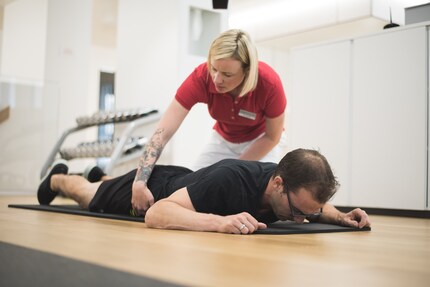
You don't necessarily need someone to assess you for the three tests. The distance between your fingers and the floor is easy to assess and your body awareness during the exercises is also important feedback. Checking your flexibility is one thing. If you want to improve it in the long term, you shouldn't focus on an isolated "construction site" in your body, but rather include all areas involved in the training in the sense of chains.
Are you also tense? Or curious to see what else is coming on this topic? I'm browsing through our range and trying out various products from Blackroll, Triggerpoint & Co. Here's my author profile, where you can follow me.
Simple writer and dad of two who likes to be on the move, wading through everyday family life. Juggling several balls, I'll occasionally drop one. It could be a ball, or a remark. Or both.
Interesting facts about products, behind-the-scenes looks at manufacturers and deep-dives on interesting people.
Show all